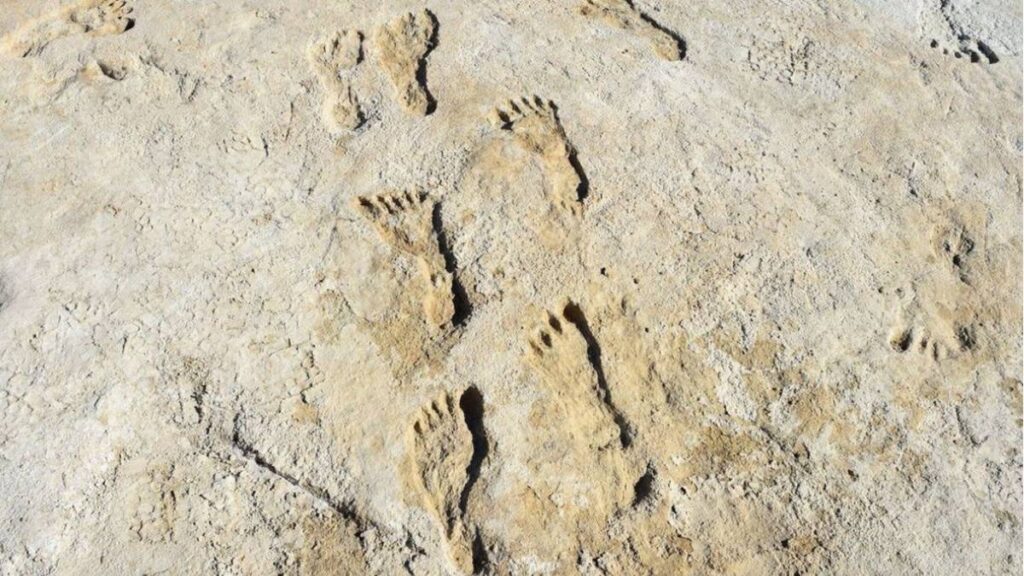There are several origin stories across the world. They are different across cultures and religions. These stories or beliefs date back thousands of years. However, more recently, more archaeological and biological finds contradicted many of these beliefs.
The new findings stir up multiple debates about the first humans that lived in North America. Experts believe the new research could be “one of the hottest debates in archaeology.” It was presented Dec. 15 at the American Geophysical Union Annual Meeting (AGU23) in San Francisco. Liza Lester of the American Geophysical Union wrote the article.
In the article, Lester says that archaeologists have always argued that early men walked through an ice-free corridor between ice sheets over 13,000 years ago. However, recent findings indicate that people found their way to North America much earlier.
For example, there’s an archaeological discovery of human footprints at White Sands National Park, New Mexico, that date as far back as 23,000 years ago in New Mexico.
ALSO READ: Wisconsin Man and His Daughter Stumble on a Century-Old Shipwreck While Fishing
Furthermore, Archaeologists have discovered remains of coastal settlements in western Canada that existed as early as 14,000 years ago. The recent research was presented at the AGU23 meeting. The new research provided another idea about the origins of humans in North America.
“Given that the ice-free corridor wouldn’t be open for thousands of years before these early arrivals, scientists instead proposed that people may have moved along a ‘kelp highway,'” Lester writes. “This theory holds that early Americans slowly traveled down into North America in boats, following the bountiful goods found in coastal waters.”
POLL—Is Climate Change a Major Threat That Requires Immediate Policy Action?
Also, Lester’s research indicates that climate reconstructions of the Pacific Northwest suggest that sea ice could have been one of the ways for early men to travel deeper into the south along the Pacific coastline from Beringia. “the land bridge between Asia and North America that emerged during the last glacial maximum when ice sheets bound up large amounts of water causing sea levels to fall,” Lester writes.
Also, research shows that the ocean currents thousands of years ago were double of what they are today. This was when glacial activities were at their maximum about 2,000 years ago because of glacial winds and lower sea levels. According to Summer Praetorius of the U.S. Geological Survey, those factors would have made it extremely difficult to migrate through the coast by boat.
ALSO READ: Scientists Warn Zombie Deer Disease Is a ‘Slow Moving Disaster’
However, many experts ask, what if the early migrants didn’t use boats to get to North America? More particularly, Praetorius’ team is looking for answers to that question because existing evidence shows that people back then had no issues with the cold temperatures. However, if they weren’t paddling against the current, “maybe they were using the ice as a platform,” Praetorius suggested.
Praetorius and her team examined data from tiny, fossilized plankton to lay out climate models and “get a fuller picture of ocean conditions during these crucial windows of human migration.”
You Might Also Like This
Rep. Gaetz Calls Out Delta Air Amid Accusations of Transporting Illegal Immigrants
Chicago Mayor Laments Migrant Influx, Says It Is “Not Sustainable”
Consultant Fired From His Job as Santa for Criticizing the Conflict in Gaza
Pennsylvania Animal Shelter Experiences Empty Kennels for the First Time in 47 Years
Pro-Palestinian Activists Arrested for Blocking Entry Into Airports in New York and Los Angeles
